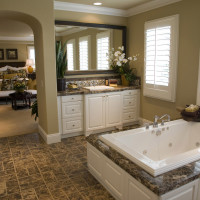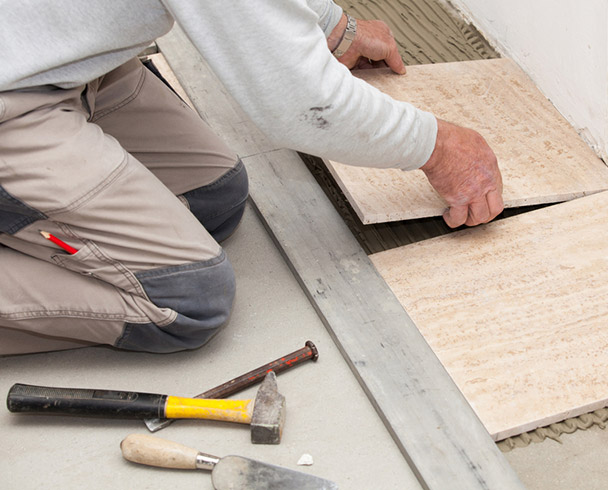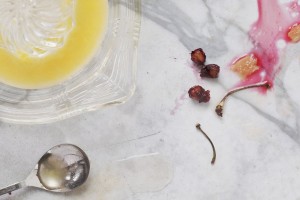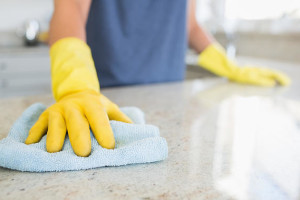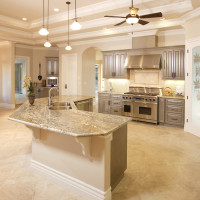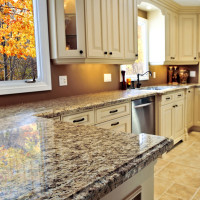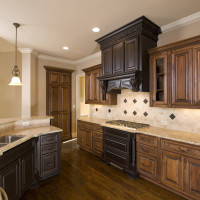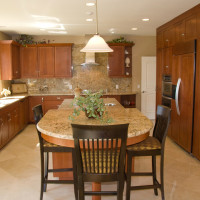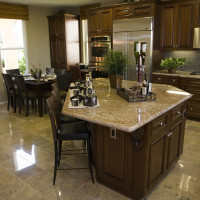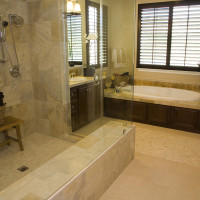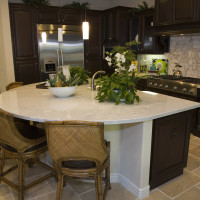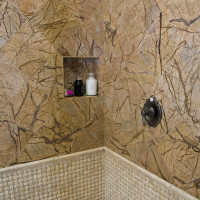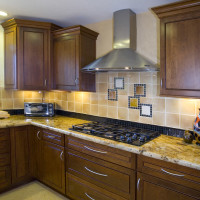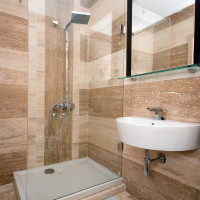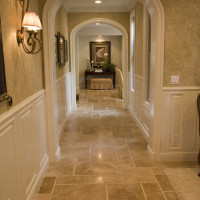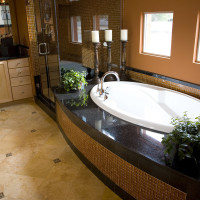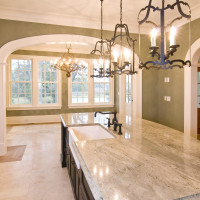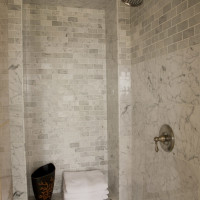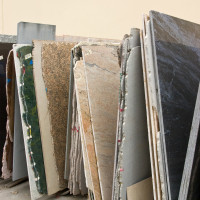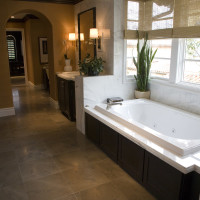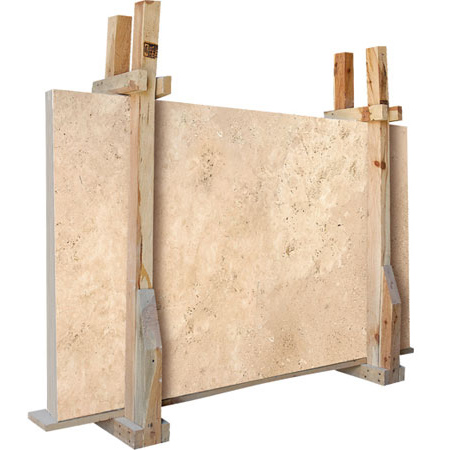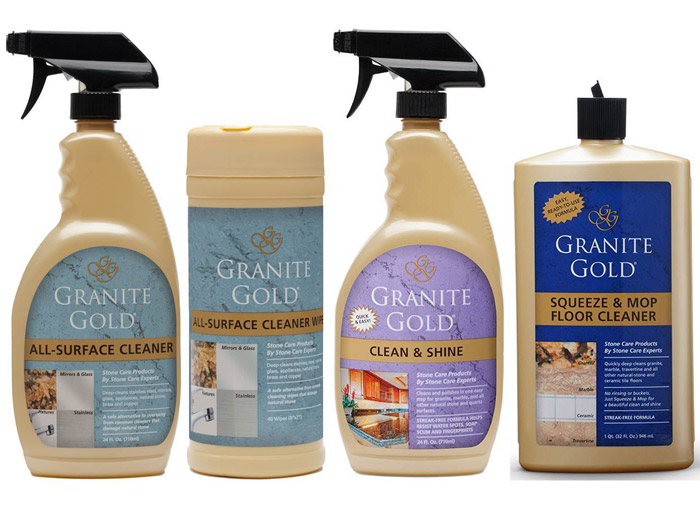Coasters: Use coasters under all glasses, particularly those containing alcohol or citrus juices.
Trivets: While many stones can withstand heat, the use of trivets or mats is recommended.
Dust Mopping: Dust mop interior floors frequently using a clean non-treated dry dust mop. Sand, dirt and grit are abrasive and can damage natural stone.
Mats/rugs: Mats or area rugs inside and outside an entrance will help to minimize the sand, dirt and grit that may scratch the stone floor. Be sure that the underside of the mat or rug is a slip resistant surface.
Vacuum cleaners: If used, be sure the metal or plastic attachments or the wheels are not worn as they can scratch the surface of some stones.
Spills: Blot the spill with a paper towel immediately. Don’t wipe the area, it will spread the spill. Flush the area with water and mild soap and rinse several times. Dry the area thoroughly with a soft cloth. Repeat as necessary.
Cleaning:
- Clean stone surfaces with a neutral cleaner, stone soap, or a mild liquid dishwashing detergent and warm water.
- Similar to any item cleaned in your home, an excessive concentration of cleaner or soap may leave a film and cause streaks. Follow manufacturer recommendations.
- Use a clean rag mop on floors and a soft cloth for other surfaces for best results.
- Rinse the surface thoroughly after washing with the soap solution and dry with a soft cloth.
- Change the rinse water frequently.
- In the bath or other wet areas, soap scum can be minimized by using a squeegee after each use. To remove soap scum, use a non-acidic soap scum remover or a solution of ammonia and water (about 1/2 cup ammonia to a gallon of water). Frequent or over-use of an ammonia solution may eventually dull the surface of some stone types.
- In outdoor pool, patio or hot tub areas, flush with clear water and use mild bleach solution to remove algae or moss.
Cleaning Products:
- Many suppliers offer products used for stone cleaning.
- Products containing lemon, vinegar or other acids may dull or etch calcareous stones.
- Scouring powders or creams often contain abrasives that may scratch certain stones.
- Many commercially available rust removers (laundry rust stain removers, toilet bowl cleaners) contain trace levels of hydrofluoric acid (HF). This acid attacks silicates in addition to other minerals. All stones, including granite and quartzite, will be attacked if exposed to HF.
- Do not mix ammonia and bleach. This combination creates a toxic and lethal gas.
SEALING
Sealing is a common step taken on some stones as an extra precaution against staining. In fact, the sealing products used in the stone industry are ‘impregnators” which do not actually seal the stone, but more correctly act as a repellent rather than a sealer. Sealing does not make the stone stain proof, rather it makes the stone more stain resistant. When consulting with your stone supplier, you may find that many stones do not require sealing. However, applying an impregnating sealer is a common practice.
When considering sealing, remember that sealing the stone does not make the stone stain proof, it makes it more resistant to staining.
If a sealer is applied in a food preparation area, be sure that it is non-toxic and safe for use.
Consult with your supplier or sealing manufacturer specific to the type of sealer and frequency of use recommended.
STAIN IDENTIFICATION TIPS
identifying the type of stain on the stone surface is the key to removing it. Stains can be oil based, organic, metallic, biological, ink based, paint based, acid based. If you don’t know what caused the stain, consider likely staining agents that may have been present. Here are some questions you consider:
Where is the Stain Located?
- Is it near a plant, a food service area, an area where cosmetics are used?
- What color is it?
- What is the shape or pattern?
- What occurs in the area around the stain?
WHAT TYPE OF STAIN IS IT?
The following sections describe the types of stains you may have to deal with and the appropriate household chemicals to use and how to prepare and apply a poultice to remove the stain.
Oil-based
(grease, plumbers’ putty, tar, cooking oil, milk, cosmetics)
An oil-based stain will darken the stone and normally must be chemically dissolved so the source of the stain can be flushed or rinsed away. Clean gently with a soft, liquid cleanser with one of the following: household detergent, mineral spirits, or acetone.
Organic
(coffee, tea, wine, fruit, tobacco, paper, food, urine, leaves, bark, bird droppings)
May cause a pinkish-brown stain and may disappear after the source of the stain has been removed. Outdoors, with the sources removed, sun and rain action will generally bleach out the stains. Indoors, clean with 12% hydrogen peroxide (hair bleaching strength) and a few drops of ammonia.
Metal
(iron, rust, copper, bronze)
Iron or rust stains are orange to brown in color and follow the shape of the staining object such as nails, bolts, screws, cans, flower pots, metal furniture. Copper and bronze stains appear as green or muddy-brown and result from the action of moisture on nearby or embedded bronze, copper or brass items. Metal stains must be removed with a poultice. (See website on Using a Poultice –
www.marble-institute.com/consumers/poultices.cfm. Deep-seated, rustystains are extremely difficult to remove and the stone may be permanently stained.
Biological
(algae, mildew, lichens, moss, fungi)
Clean with diluted cleaning solution. Use a 1/2 cup of any of the following: ammonia, bleach, or hydrogen peroxide and a gallon of water. Reminder: do not mix bleach and ammonia.
Ink
(magic marker, pen, ink)
On light colored stones, clean with bleach or hydrogen peroxide. On dark colored stones, clean with lacquer thinner or acetone.
Paint
Small amounts can be removed with lacquer thinner or scraped off carefully with a razor blade. Heavy paint coverage should be removed only with a commercial “heavy liquid” paint stripper available from hardware stores and paint centers. These strippers normally contain caustic soda or lye. Do not use acids or flame tools to strip paint from stone. Paint strippers can etch the surface of the stone; repolishing may be necessary. Follow the manufacturer’s directions for use of these products, and flush the area thoroughly with clean water. Protect yourself with rubber gloves and eye protection, and work in a well-ventilated area. Use only wood or plastic scrapers for removing the sludge and curdled paint. Normally, latex and acrylic paints will not cause staining. Oil-based paints, linseed oil, putty, caulks and sealants may cause oily stains. Refer to the section on oil-based stains.
Water Spots and Rings
(surface accumulation of hard water)
Buff with dry 0000 steel wool.
Fire and Smoke Damage
Older stones and smoke or firestained fireplaces may require a thorough cleaning. When the smoke is removed, there may also be some etching (due to carbonic & other acids in smoke). Commercially available “smoke removers” may save time and effort.
Etch Marks
(caused by acids left on the surface of the stone)
Some materials will etch the finish but not leave a stain. Others will both etch and stain. Contact your stone dealer or call a professional stone restorer for refinishing or repolishing etched areas.
Efflorescence
(a white powder that may appear on the surface of the stone)
It is caused by the deposition of mineral salts carried by water from below the surface of the stone. When the water evaporates, it leaves the powdery substance. If the installation is new, dust mop or vacuum the powder. You may have to do this several times as the stone dries out. Do not use water to remove the powder; it will only temporarily disappear. If the problem persists, contact your installer to help identify and remove the cause of the moisture.
Scratches and Nicks
Slight surface scratches may be buffed with dry 0000 steel wool. Deeper scratches and nicks in the surface of the stone should be repaired and repolished by a professional.
Using a Poultice
Go to www.marble-institute.com/consumers/poultices.cfm for more information, or call a stone professional (recommended).
NATURAL STONE EASY TO CLEAN AND MAINTAIN!
Call your professional stone supplier, installer or a restoration specialist for problems that appear too difficult to handle.
Stain Removal Recommended by MIA. Please visit MARBLE INSTITUTE OF AMERICA web site for more information.
SPILLS AND STAINS
Blot the spill with a paper towel immediately. Don’t wipe the area, it will spread the spill. Flush the area with plain water and mild soap and rinse several times. Dry the area thoroughly with a soft cloth. Repeat as necessary. If the stain remains, refer to the section in this brochure on stain removal.
STAIN REMOVAL
Identifying the type of stain on the stone surface is the key to removing it. If you don’t know what caused the stain, play detective. Where is the stain located? Is it near a plant, a food service area, an area where cosmetics are used? What color is it? What is the shape or pattern? What goes on in the area around the stain? Surface stains can often be removed by cleaning with an appropriate cleaning product or household chemical. Deep-seated or stubborn stains may require using a poultice or calling in a professional. The following sections describe the types of stains that you may have to deal with and appropriate household chemicals to use and how to prepare and apply a poultice to remove the stain.
POULTICES
Making and Using a Poultice
A poultice is a liquid cleaner or chemical mixed with a white absorbent material to form a paste about the consistency of peanut butter. The poultice is spread over the stained area to a thickness of about 1/4 to 1/2 inch with a wood or plastic spatula, covered with plastic and left to work for 24 to 48 hours. The liquid cleaner or chemical will draw out the stain into the absorbent material. Poultice procedures may have to be repeated to thoroughly remove a stain, but some stains may never be completely removed.
Poultice Materials
Poultice materials include kaolin, fuller’s earth, whiting, diatomaceous earth, powdered chalk, white molding plaster or talc. Approximately one pound of prepared poultice material will cover one square foot. Do not use whiting or iron-type clays such as fuller’s earth with acid chemicals. The reaction will cancel the effect of the poultice. A poultice can also be prepared using white cotton balls, whitepaper towels or gauze pads.
CLEANING AGENTS OR CHEMICALS
Oil-Based Stains
Poultice with baking soda and water OR one of the powdered poultice materials and mineral spirits.
Organic Stains
Poultice with one of the powdered poultice materials and 12% hydrogen peroxide solution (hair bleaching strength) OR use acetone instead of the hydrogen peroxide.
Iron Stains
Poultice with diatomaceous earth and a commercially available rust remover. Rust stains are particularly difficult to remove. You may need to call a professional.
Copper Stains
Poultice with one of the powdered poultice materials and ammonia. These stains are difficult to remove. You may need to call a professional.
Biological Stains
Poultice with dilute ammonia OR bleach OR hydrogen peroxide. DO NOT MIX AMMO-NIA AND BLEACH! THIS COMBINATIONCREATES A TOXIC AND LETHAL GAS!
